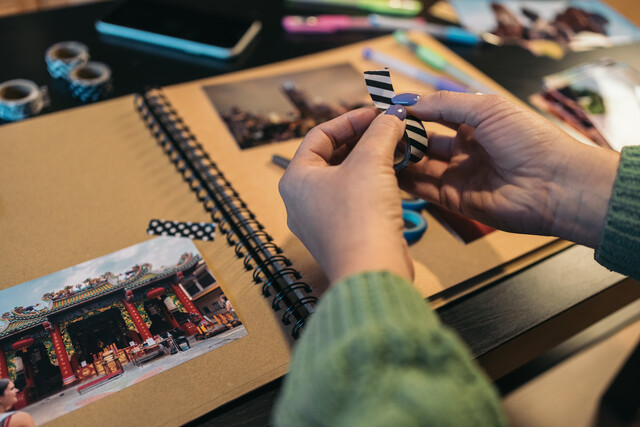Introduction: Since the beginning of time, man has been concerned about image and grooming. Initially man focused on the natural tendencies of the body to eliminate toxins and waste and so tried to encourage the body in various ways. Later man sought to help the body find a balance to sustain and promote natural whole body health. More attention over time was given to the body surfaces and the presentation of the body to others. People began to experiment with ways to increase their beauty. Piercings and tatoos did not begin in this century.
Before Christianity, there was more focus on beautification along with cleansing. It was normal to make trips to the city baths and to spend time with friends, lounging, using aromatic scents and then edifying themselves with color, special hair styling and dressing up. It was common for those in the upper classes to travel to special springs for both cleansing and healing the body of impurities.
As the Greek and Roman culture became more important in the world the use of water in fountains, bathing and healing grew in importance. It was a renaissance in many ways. People became occupied with strength and fitness and the Olympics was born. Literature and science moved up to the same level as medicine, and the obsession with body developed its own path called hygiene. Sanitation of the body's total funtioning came under scrutiny and people at all levels of society became more aware of their image.
During all this time, special tools and products were developed and used as cosmetics. More literature became available and the different methods and techniques spread and ideas from around the world moved across continents. People in one part of the world took to plunging into cold water to purify themselves. As Christianity spread, many people struggled to maintain their need to treat their bodies with care and the need to deny self. I seems if the scientists and the medical leaders were not trying to tell people what was healthy, the church leaders were there to take it up. It was during this time that grooming became a more private undertaking. And as clothing changed to the wearing of more garmets, body odor became a pervasive problem and those creative types rose to the occasion.
Over the centuries the use of herbs and natural remedies increased and then trends moved into more chemical and medical invasive procedures to improve image and grooming. Currently there is a turn back towards less toxic cosmetics and skin creams and because of the internet and the fact we are more aware of what is available beyond our own borders the demand for healthy image products is increasing. And that's where the Image Consultant enters the picture. History supports what you are about.
A. Today you will find that the Association for Image Consulting International or the AICI, leads the world in promoting the success of image consulting and leading each consultant to find personal satisfaction in the field. They define an image consultant as a professional who provides services for individuals and corporations through coaching, presentations, seminars, and workshops assisting people in their appearance with body and color analysis, wardrobe development and management and with business and social etiquett, civility, branding, and much more. This is the place image consultants from around the world have gathered to share resources, set international standards, certify training and bring a professional air into the job.
According to The London Image Institute, based in Atlanta, Georgia, the general concept of a specific consultat to work with a personal image, was preceded by fashion, finishing, and modeling schools. The only people who hired image consultants up until the early 70's were political candidates, models, television, movie personalities and other celebrities. It was known as getting a "makeover." In 1980, John Molloy wrote the book "Dress for Success" with his color theory ideas that swept across the globe, and was especially helpful for many women who were getting into the workforce and demanded anything they could use that would gain them upward mobility in a world that was dominated by the male sex. By the 1990's and at the dawn of the young person's computer businesses, casual business attire became the trend. In this second millennium, the pendulum appears to be swinging back in the other direction and to a more formal dress, look, behavior, and expressions. Part of this may have to do with how the computer has created a global community and there are cultures who don't understand the American lack of civility and ettiquette. Asian countries actually teach these things to their children. Become globally aware.
B. The current research in civility, concludes that there are basic concepts to focus on that bring civility into a person's thinking, actions, and words. These two concepts are broad but give the image consultant a place to begin with any client.
The first conclusion the research shows can bring more civility into a person's life is to increase positive inter-personal relationships. That is really a focus on self. You cannot change others but you can change how you respond to them and how you present yourself to them. In doing that, they will either make some changes of their own to meet you in the middle, or end the relationship and either one is perfectly acceptable for success in a person's life. By making sure that you have done everything in your power to bring to the table your true self in a way that is acceptable and nonthreatening to others, and in a way that is very concrete and fair, you can feel confident that you have done your best and the relationship is just not one to pursue.
Interpersonal relationships cross boundaries that are quite personal to both parties. It doesn't matter if it is a friendship, a business connection, or a societal concern, you are constantly being thrown into some arena that requires relating to others. Its just a part of life. If individuals can learn to be civil in their presentations more will be accomplished between them.
The second conclusion recommends that a person be able to see both common ground with others and competitive ground. To know and understand what shapes these two sides of relationship expectations with others and with the world, give you the "edge." If you stop and listen, think and analyze, before you express yourself, you might just be able to pull out the pieces that can hinge a relationship and put those that do not, aside for the present.
C. An Image Consultant works to bring a person to the point where they can develop positive relationships with others by honestly presenting both a civil and a cooperative presence. This kind of presence is brought about when the consultant is able to help the client express himself with honesty, respect, and clarity. This is done by giving the client coaching on how to become honest, respectful and to express ideas clearly. It is also brought about in the accomplishment of an improved visual presence. An image consultant is the expert in this field and the success of a client's business and peronal relationships, and social requirements can be met when the professional expertise of an image consultant is employed.
Summary: It is nothing new in the lives of humans that we seek remedies to improve how we look, how we feel, and how we relate to others. We seem to have an innate desire to get along, fit in, and feel good about ourselves. That in itself is a broad target to hit. Each person's idea of how to do this is different. With, however, the guide of a good image consultant, any person who wants to develop his image to present himself as a respectable person, can make the changes necessary to be that person in a genuine way. Knowing how to do this is the wall many face. An image consultant is there to knock all walls down, provide information, show the pathways, and walk such a client toward the mirror where his true identity will surface in the best way possible.
Research has been done and analyzed and the results affirm that knowing how to present yourself visually, verbally, and behaviorally in ways that lead to positive interpersonal relationships and cooperative negotiation skills is what it takes to be successful, however success is defined. Taking individuals or small groups from the same environment and providing data and coaching in order to give credence to each person as an individual is an amazing skill. An Image Consultant can learn how to do this become an expert at it.
Image in Today's World
Introduction: As an Image Consultant, an awareness of a client's culture, business, age, social class and regional environment must be part of helping that client reflect who he is. If the client recognizes it or not, all of these affect who we are, how we appear to others, and contribute to defining our true self.
A person who is in the business world will not be comfortable with a wardrobe that consist of one suit. A person who works in the service sector may not need or want a suit at all. A person in one social class who works in uniform but mixes socially in a formal style may need several suits or formal outfits. The older person may not need to know the rules used in dance clubs in Asia where the younger person may want understand etiquette used while staying in a hostel. A client from France needs to understand that kissing another male on the cheek is not so acceptable in the Americas and an American who goes to France must understand this is the accepted behavior.
Knowing what is acceptable in one region or culture and what is considered rude is important. It is not only important that a person know how to act, but also how to read the actions of others. It doesn't take much to confuse the communication. When others perceive the image you present, they perceive it with their own biases, just as you see them through your own eyes. Learning to develop your own characteristic of acceptance is a key to communication. If you practice acceptance of differences of other people, you, in essence, give yourself permission to understand that other person, see him from a different point of view and create communication that is more effective. And that is the bottom line of image. Image is the" box" you present to others in hopes that they will accept it, open it, listen to what is in it, and communicate openly.
A person has little control other any other person. You cannot change the way the other person will perceive your "box." So what you have to do is understand the other person and make your "box" more acceptable. This very idea is the difference between a person who is successful with those outside of his "sameness" and a person who will not tolerate, be open to, understand, accept, and communicate, thus finding failure. Being tolerant is not about taking another person's differences as your own, it is merely acknowledging those differences, accepting that person regardless of any differences, and moving past them in order to communicate with that person in an honest way. If the other person has not wrapped his box to make it presentable to you, you have to show acceptance for that image and go ahead and open their box regardless of how it is wrapped. You may have worked on your own image while another person has not. Don't miss amazing opportunities because you are intolerant of the presentation of others. It's what is inside of that box that really counts.
A. Cultural and regional differences have become a major issue in the world recently. The internet has brought the world marketplace into our daily presence. People from various countries and regions that previously communicated through the written word now find they are using visual modes for communicating as well as meeting more face to face. This has created communication issues because of such differences in the cultures, behaviors, and manners. How a person perceives your actions and how you perceive theirs can break down a meeting before it even begins. The other person may not move to understand or accept your behaviors or your etiquette rules, so to find success, you must. Here are some examples of cultural differences.
1. In the Middle East, people share ideas through a round-about discussion of views and are less direct or up-front. It is polite to discuss the edges of an issue and slowly move toward the middle.
2. In the United States, it is acceptable to tell a colleague or a boss that you realize you are not good in a specific area but you are working to make improvements. In many Asian countries you might say you have heard the view of another about your work and are taking action accordingly. You would never openly admit you are not good at it.
3. In the Japanese culture, there is an insecurity about what others think about them and their work. A person from such a culture might be very sensitive to try something new, to share feelings and thoughts to help another to understand their position.
4. In India, if you are not "the leader in authority," saying you are a leader or that you actively take the lead to identify and solve problems is unacceptable. You have to communicate this in another way, for example; you are able to find more productive ways to work.
5. In America a person may be lauded when he tells someone he is able to take decisive action, but in Saudi Arabia, decisions are mulled over, there are usually several levels of approval, and the decision with will only be made by the top person after a time of much consideration up through the chain of command.
6. In China, relationships between people, even in business is at the forefront of how an industry works. Aggressive people who pride themselves in a style of moving others quickly or forced motivation will be seen as out of harmony with others. The communication should be that you can be clean and concise when relating to the needs of others. Many large businesses in China have company songs that they sing at meetings to bring cooperation and general team spirit.
An Image Consultant is required to understand and know cultural differences in business and social situations to assist any client who has that need. If a client can wrap his box in a culturally acceptable way for a specific culture, then he is halfway to his goal when he presents himself. Knowing how to make personal communication comfortable for another person goes a long way. There is so much more than simply knowing how to behave. There is knowing how to behave in all cultures.
B. In different industries and businesses, what makes an acceptable presentation or image varies as well. Even within these variations, each client must be able to define his role, the company or the situation to understand what image he wants to portray. To present an honest representation of a person's true image, he has to be able to understand how he fits into his life. The client must figure out what his "niche" is or where he focuses his attention. A client needs to be aware of his own strengths and weaknesses, what give him credibility, what causes failure. It is in this self-examination that both the client and the Image Consultant are able to build that honest image that conveys who the client is and not who he wants to be.
A client may find this part difficult. It causes them to face their real self. A client who insists on presenting himself as something he is not will only be able to succeed for so long before the façade fades or before the real person trips him. This may be the Image Consultant's most difficult job. That is, the job of getting a client to dig through layers towards discovering who he really is, may take some time and some hard work. It requires patience, thoughtfulness, and a strong sense of self, because the client's reactions to this difficult work can include anger, verbal assaults, and negative accusations. In the end the client will love you.
C. Today, more than ever before, age plays a large role in a person's image. Social class is often right on the heels of age. For the most part, people want to appear younger. It makes sense. In the mind, a younger looking person creates an illusion of more energy, the ability to learn quickly, be less rigid in how he works, more willing to change, move, take a chance, and present the image of new and fresh ideas. An older person is seen as one who will retire sooner, be settled in and tied to family and home, and set in his ways.
Stripping it all down to the truth factor, an older person also has more experience, a more varied experience, is often tempered to change, offers stability, patience, depth, and is more reliable. In the presentation of truth, an Image Consultant has to see the positive aspects that older clients bring with them and work around the negatives. Having facial reconstruction and lying about age is not a path to success. An Image Consultant needs to have a view of the entire person, inside and outside in order to assist in his development to present who he really is in the best light of his strengths and abilities not matter what the age.
Social class is another one of those areas that people will try to patch together. People often get ideas that they need to appear, act like, dress like and talk like they come from money, high end educational experiences and prestige, having influence, achievement and rank over most others. This kind of pretense is quickly seen through. It is better to be who you are. If a client insists on wearing a Brioni Vanquish II suit at over $40,000, and he really has no budget for that, as his Image Consultant, it is your job to bring him down to reality. The need of a client to appear as something he is not takes patience and understanding that this client is trying to cover up something he is embarrassed about in his own life. Hiding what is felt as a personal failure, a weakness, or a character blemish is done by most everyone. The best presentation or image a person can make, however is one that presents the honest person with the success and strengths emphasized. It is not meant to cover up other things at all because, in truth it is the failures, the weaknesses, the problems a person has overcome that make him the success and strong person he is.
To be successful as an Image Consultant requires the development of finesse to bring the subtle and delicate art of presentation into reality and that means into the reality of a person's budget.
Summary: The current world stage is now playing the lives of people who never thought they would be involved in world markets, politics or relationships. No more do geographical boundaries separate us from involvement with groups of others whose cultures, dress, mannerisms, and speech are so different from our own. Cross-cultural communication is now the norm. If you limit yourself to working with those who speak your language, who are from your own country, and who act just like you do, you will miss out on the future.
The Image Consultant must have understanding of various cultural nuances, etiquette and dress. Clients who know and understand other people must know and understand why they do what they do. In understanding comes acceptance and tolerance. If a client wants to improve himself for any reason and refuses to practice acceptance and tolerance of differences, he will fail to ultimately find success.
In addition to this, if a client is unable to face who he is in an honest way, he will fail to develop a presentation or image that is less than façade waiting to crumble under pressure. Who a person is on the inside must be presented to others in ways that others will perceive them as that person. If the client works with those from other cultures, he will need to consider how to present himself for that person to perceive who is really is. Sometimes that means tweaking the way they behave or the way they express themselves.
Probably the best way to express to a client who is learning about another culture is to emphasize that the people in that region have learned to live a life that is suitable for them in that place. Historical events, the environment, and geography all play a part in why a person from a certain culture does what he does. In the United States, the history of acceptable behaviors is shallow. In countries of Asia and Europe, those things that remain from ancient civilizations include not only the old statues, buildings, castles, and shrines, but mannerisms, customs, dress, and ideas. To understand a person, you need to understand their culture.
In your notebook you might make a list of books to read based on cross-cultural communication. There are many with more coming out all the time. Stay up to date by continually reading, learning, and sharing with other professionals.





























